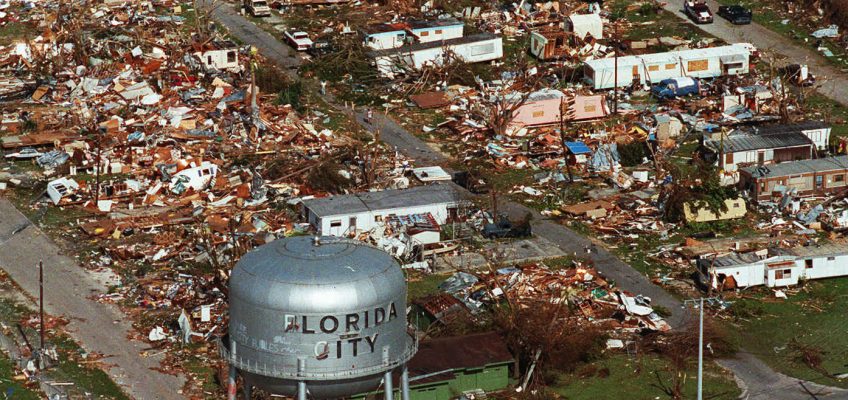Listening to public radio one morning, Keely Wolter heard the following anecdotal statistic: By the time many children reach middle school, they’ve already viewed pornography.
When she heard that, Wolter said she thought, “That’s coming up sooner than I think.” She’s the mother of a 5-year-old and a 9-year-old.
What to do?
After several unsuccessful attempts to learn what her own kids would be taught in school for sex education, Wolter decided to take control of the situation. Her plan for her own kids is now her business, The Talk Toolbox — a monthly subscription box of materials designed to guide parents and their kids through comprehensive sex education with books, games and toys.
The Talk Toolbox made it to the semifinals of this year’s MN Cup competition, which awards seed money to Minnesota entrepreneurs. It brings together established business owners, experts in their field and everyday folks who have figured out a solution to one of life’s problems. Wolter falls into that last category. MN Cup recently named finalists in nine divisions and will announce a Grand Prize winner Oct. 6.
While Wolter’s startup did not make it to the finals, the Toolbox stood out among its competitors, said Kailin Oliver, director of the MN Cup. “They took a topic that is hard to talk about and made it resonate,” she said.
The goal of the toolbox, Wolter said, is to change that one-time dreaded “talk” for parents (and kids) into a series of little talks that focus on topics like autonomy, friendship versus romance, internet safety and handling rejection.
“So many of us who didn’t get a talk in our childhood, we don’t know how to have that talk with our kids because we never did it,” said Wolter, who works as a vocal coach for the Guthrie Theater and was born in St. Paul. “So we’re teaching kids and parents and fostering relationships and conversations.”
So far, Wolter’s invested $75,000 of her own savings into the business and is interested in working with potential investors.
The materials for the boxes are printed at Smartpress in Chanhassen and as for the manufacturing process, that’s all done in Wolter’s garage, she said, adding that her own children love folding the boxes.
How it works
Separated into four age groups — 4-7, 8-10, 11-13 and 14-16 — The Talk Toolbox is designed with age-appropriate content to meet kids where they’re at.
At $50 a month, each box comes with a book related to that month’s topic, a specialized game, a craft or activity, conversation cards, and a toy or stickers.
Keely Wolter talks about her product, The Talk Toolbox, at her Richfield home on Tuesday, Aug. 12, 2025. The Talk Toolbox is a monthly subscription box to help parents teach their children comprehensive sex education. (John Autey / Pioneer Press)
For the youngest age group, the basics covered are things such as the names of body parts and why it’s important to ask for permission before touching someone.
“Autonomy” is one of the themes for ages 8-10 with boxes addressing changing bodies and relationships.
For ages 11-13, themes include hormones, identities and hygiene, to name a few. For the oldest age group, 14-16, sex is at the forefront, Wolter said, and themes covered in the box include contraceptives and pornography literacy, such as being able to critically analyze porn and its potentially problematic themes.
Before it arrives in the mail, parents receive an email that outlines what they can expect in that month’s box.
The boxes can also be tailored to fit a family’s needs, Wolter said. For example, parents who don’t allow their children screen time can opt out of a book about internet safety. “It really puts the parents in control,” she said.
Choosing the curriculum
When it came to creating the curriculum, Wolter knew the questions she wanted to ask, but didn’t have the answers.
What do we need to be teaching them and when? What is age appropriate? When do we need to introduce certain topics? “I’m not a sex educator, I’m just a mother,” said Wolter.
Enter Dr. Kristen Mark, a professor at the University of Minnesota’s Department of Family Medicine and Community Health and the Joycelyn Elders Endowed Chair in Sexual Health Education.
Related Articles
Judge strikes down Minnesota law banning religious tests for college credit program
New cellphone policies for many students this year. How have others worked?
Back to school: A roundup of east metro school cellphone policies
Justice Dept. declines to defend grants for Hispanic-serving colleges, calling them unconstitutional
Privacy and civil rights groups urge US colleges to end campus surveillance to protect protesters
“When (Wolter) reached out, I was like, ‘Yes, finally someone is doing something like this,’” said Mark, who also serves as the director of education at the Eli Coleman Institute for Sexual and Gender Health and as the director of the Center for Women’s Health Research.
The content in each toolbox is based on scientific literature around sexual development, and the exercises and activities are aligned with developmental readiness and attention at that age, Mark said.
“Sex education entails way more than just the mechanics of sex,” she said.
For example, one box focuses on navigating and communicating consent and includes role-play scenarios where kids can practice saying yes and saying no in different situations.
Another box, focused on bodily autonomy, includes a sign for kids to hang on their door that says “accepting hugs” on one side and indicates “alone time” on the other. While it is a simple act, flipping the sign from one side to the other throughout the day gives kids agency over their bodies and their time.
‘Wonder and excitement’
Ingrid Wolter, 6, sets up the cards for a game included in The Talk Toolbox at her Richfield home on Tuesday, Aug. 12, 2025. The Talk Toolbox is a monthly subscription box for parents to teach their children comprehensive sex education. (John Autey / Pioneer Press)
Freelancer Jason Ballweber, who created the games in the Toolbox, said his job starts once Mark’s ends.
As soon as a lesson plan is nailed down, he starts creating an interactive game that uses the lessons and information in that month’s box. Ballweber, who also handles administrative tasks for the Toolbox, has experience in educational theater ranging from summer camps to college students.
“I knew there was a lot I was going to have to learn because I didn’t get the female side of things in school and I didn’t want to put it on my partner just because she’s a woman,” said Ballweber, who has a 9-year-old daughter.
When playing the games in the box, Ballweber said he wants participants to “come at it from a place of wonder and excitement.”
When you ask really specific questions, it gives kids a guide and filters the conversation, he said, and his games are designed to do just that.
“None of the games are about winning, they are about ‘How do we make it more fun and more normal?’” he said.
One game that he created for the “anatomy” themed box is a variation of bingo where the spaces are different body parts. “It’s going to make kids giggle at first, but that’s okay, have it come from a place of fun, not shame or terror,” he said.
A card game Ballweber created asks kids how they would react to certain people or situations using only a handful of responses: “wave,” “high five,” “fist bump” and “kiss.”
Similar to the Apples to Apples party game, a universal card is flipped for everyone to respond to with their chosen reaction.
For example, say the universal card is “dentist” and everyone needs to pick a reaction.
“If the kid says — ‘I would kiss my dentist,’ — ask why,” Ballweber said. “To an 8-year-old, a kiss doesn’t mean a passionate, romantic kiss,” he said, adding that maybe it’s just because their mouth is clean.
“You learn a lot about each other when they go, ‘I would high five a potato, but never fist bump it,’” he said.
Even if the written rules of the game aren’t followed, Ballweber said, “The point is to get to a place where your kid feels comfortable talking about these things with you.”
Sex ed in school
“Sex ed in schools has not improved over time, in fact, in a lot of ways it has gotten less comprehensive,” Mark, the U of M professor, said.
Minnesota gets a B for its current sex ed requirement but the content was rated D+ by the Sexuality Information and Education Council of the United States, a nonprofit that advocates for sex education. The curriculum focuses on abstinence and doesn’t require instruction on consent, sexual orientation or gender identity, according to SEICUS.
“Students in St. Paul Public Schools receive age-appropriate health lessons from their classroom teachers starting in kindergarten,” said Amy Wardell, physical education and health coordinator for SPPS, in an email. “In earlier grades, the focus is on safety and well-being. In later elementary grades, lessons include information about healthy relationships and human reproduction.”
The district also partners with Family Tree Clinic, Wardell said, to provide a comprehensive lesson plan on puberty for fourth and fifth grade students. Students are not separated by gender for these talks and parents are informed in advance of the lessons.
Health education continues in middle and high school at least one time for a semester each, according to the district.
Harmful misinformation
Mark said kids today are turning to online media like TikTok, Snapchat and pornography for sex education.
“Even if they’re Googling, the websites they can end up at might have wildly inaccurate information,” she said. “They don’t necessarily have at that age the ability to critically evaluate what their sources are.”
Without vetted sources, Mark said children could not only be given inaccurate information, but harmful misinformation.
Related Articles
Business People: Toro names Edric Funk president and COO
‘Monopoly: St. Paul Edition’ hits the landmarks, nails the Minnesota-isms in Thursday debut
‘Quick thinking and courage’: St. Paul cafe owners thank man who found robbery suspect
Business People: Coborn’s exec David Best tapped to lead Cub Foods
Do you know the ‘Coolest Thing Made in Minnesota’?
“They might stumble upon porn and get unrealistic expectations about sex,” Mark said.
“We know, and the research shows, that when you experience feelings of shame around sex, you are less likely to seek medical care, you are less likely to have a healthy sexual trajectory and more likely to have negative implications that can occur around sex happen to you,” Mark said.
“If no one is taught and no one knows where to find accurate, reliable, empirically informed information, then what do you do?” Mark said. “That’s what this (toolbox) is for.”
Currently in the pre-revenue stage, Wolter said once her online waitlist reaches 200, she will start shipping out the boxes herself.
To join the waitlist for The Talk Toolbox, go to thetalktoolbox.com.




